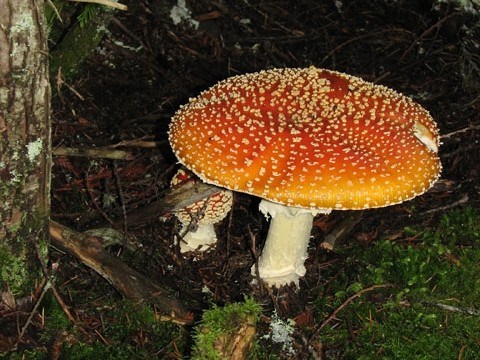Whistler Naturalists
How do we get one's tongue around pronouncing fungi in the first place? Is it fun-guy, or fun-gee? Who knows? Fungi are among the most fascinating and extraordinary organisms on Earth. They are neither plant nor animal, but are their very own kingdom. There are over 200,000 known fungal species. None of these species have photosynthetic properties, meaning they do not create their own food like plants do. Fungi are dependent on plants and animals from which they get their food. I eat mushrooms but what does the mushroom eat?
Saprophytes and Parasites - Saprophytic fungi are decomposers - nature's recyclers. They feed on dead organic matter, breaking down complex organic matter and so completing that "circle of life" scenario. Without decomposers like saprophytic fungi, the world would be extremely different. Sometimes the fungus doesn't wait for the biomatter to die, in which case the fungus is called a parasite.
Symbionts - We are lucky enough to see numerous amounts of fungal species throughout our beautiful coastal temperate rainforest. Mycorrhizal fungi have symbiotic (mutually beneficial) relationships with trees. The tree provides the fungus with moisture and solids, transported in solution as sugars, and the fungus helps the tree absorb nutrients and minerals through its roots. For instance, oyster mushrooms normally grow close to Alder trees and boletes grow in the vicinity of Douglas-firs trees. Many species of fungi are critical to the health of the forest and some trees cannot grow without their counterpart fungi.
Predators - A group of soil-living fungi actually catches its own prey - tiny nematode worms. Some snag the passing worm with an adhesive, which sticks to it. Others use snares. Either way, the victim is soon riddled with hyphae, and the work of digestion begins.
The mushroom is only the tip of the iceberg for fungi. Most of the organism's structure is found underground in the form of mycelia, which resemble a network of threads. The mycelia act in a similar way as a stomach and can digest nutrients using enzymes. It's incredible that mycelia have a life span that can last between a few days up to a few hundred years. Mushrooms are the reproductive structures (like apples on a tree) of the fungi.
With the rainy season upon us, the fungus is among us. If you wish to learn more about Frank the fun guy, then please join the Whistler Naturalists at Myrtle Philip Community School October 14 and 15 for interesting talks and exciting hunts for funky fungi.
There will also be a delicious tasting of mushrooms cooked by Chef Owen Foster from Nita Lake Lodge. My most memorable mushroom hunt was at last year's Fungus Among Us festival, where my friend and I found a bolete bigger than the size of my head!




